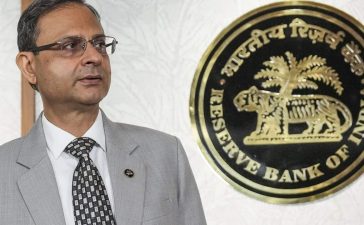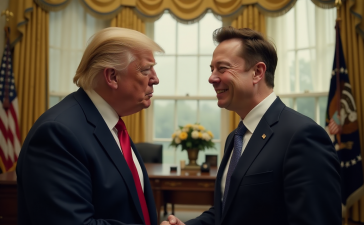
“I think if you look at our goals and objectives, we’ve outperformed our targets and those were before some of the geopolitical issues that have only made India more attractive as an opportunity for global investment,” chairman David Mussafer told ET.
In 2019, Advent had said it will deploy at least 10% from its $17-billion fund but the Advent India team/office has ended up investing an aggregate of $4.4 billion since then. In May 2022, it globally raised $25 billion, the second-biggest PE fund ever. It also has a $4 billion dry powder for a separate technology fund, its second, and has since cranked up its dealmaking world over.
Broad spectrum for investments
Last year alone, it invested $7 billion in new opportunities ranging from cybersecurity to pharma, but more importantly, realised $8.4 billion via exits — higher than their previous five-year average of $5.7 billion.
“We are more ambitious than our (previous target). In the next five years, we would like to invest $5-10 billion in India,” said London-based James Brocklebank, who co-chairs Advent’s executive committee along with Mussafer.
To put it in perspective, since opening its office in 2009 until today, over 15 years, Advent’s India office has completed 17 investments — 12 current portfolio entities and five exited — by cumulatively putting a total of ~$5.8 billion across buyouts. These included Crompton Greaves, Eureka Forbes, Encora, DFM Foods, Suven Pharma, and Bharat Serums & Vaccine. It also merged three investments — RA Chem, ZCL, Avra — to form the platform, Cohance Life Sciences.
It also backed banks and financial services companies like Yes Bank, Aditya Birla Capital, fintech KreditBee and took a chunky stake in Manjushree Technopack, a packaging company, among others.
“Very consistent GDP growth of 6 or 7% a year, consistently stable government, interesting demography, an incredible population explosion and the rising middle class — here are the things we love about India. But at the same time, there is pretty limited financial penetration,” added Brocklebank. “Also, there is a very talented workforce from a technology point of view, which has been part of the reason we’ve also been thinking about technology services as well. So as a destination for investing, we have a significant appetite for more.”
What excites Mussafer is India’s ability to offer “the full spectrum” of investment opportunities — from consumer to healthcare, technology, industrial to financial services and their sub sectors.
India: Limitless scope
“In a lot of markets, we’re much more limited in terms of the type and nature of opportunities. But here rather than highlighting just one area we think it is going to be the one that’s the most robust,” Mussafer said.
India is also helping the firm deploy more capital in other places. One such example is of Encora, a global digital engineering services company with innovation labs in India and the US, where it bought a majority stake from Warburg Pincus for $1.5 billion.
“Now the capabilities from our India office are helping to unlock global opportunities. So, our thinking is not insular about what we can deploy into India, but rather India’s become an integral part of our global platform,” said Mussafer.
Advent does not buy into the argument that Indian valuations are expensive and, therefore, making deals is difficult across public and private markets. A continuous bull run in the equity markets for four years running has sent the Nifty 50, India’s key benchmark index, at a 27% premium to its 18-year average.
Mussafer argues valuations are always relative to the growth and risk returns that underlie the opportunities. “Part of that premium is a reflection on the more significant growth opportunities that exist, as well as a reflection of the relative attractiveness of this market,” he said.
A booming capital market, however, does not translate into listing portfolio companies as the sole liquidity event. Shweta Jalan, Advent’s India head, said the firm will look at all options for exit.
“In certain listed companies, obviously, that we own, like Yes Bank, Eureka Forbes, Suven Pharma — public markets are your exit route,” she said. “But in many others, we will go down either the strategic or the financial sponsor route like we have in the past or an IPO. So, it will be a good mix. We don’t want to hang our hat on temporary buoyancy in capital markets alone for all our exits.”
Advent is reportedly looking to exit Bharat Serum and Manjushree Technopack but Jalan did not want to talk about specific deals.
Broad specialties
Globally it’s tough to typecast the firm into specific boxes like special situations or carve-out specialists or growth equity or one that is buyout obsessed. In industrials, Advent handled some of the largest deals that needed massive turnarounds of dislocated balance sheets and business models.
“In some cases, we do the same thing in the same sector. So, there are turnaround deals in consumer industries, similar to the opportunity where we bought all of Walmart’s business in Brazil and turned that business around or found the next Lululemon or Zimmerman, where we’re building extraordinarily high-growth businesses,” said Mussaffer.
Brocklebank explains further.
There are broadly two deal archetypes that Advent invests in.
“One is transformation and the other is acceleration,” he said. The transformation bucket includes companies that have inherent potential for improvement where Advent can work with management teams to really drive performance. “And then on the acceleration side, there’s inherent growth characteristic in the company or the market which also provides an opportunity for outstanding performance.”
In the US, by far the biggest market for funds, post-Covid monetary policy push and the subsequent rate increases have made price discovery of companies very difficult. Covid years were also a period of lost time and opportunity. But currently, Mussafer, an alumnus of Tulane University, believes the US IPO markets are still weak, and that the debt markets have improved with consensus emerging that US interest rates have plateaued.
“We’re always thinking about the micro story. But we’re also thinking about it in the context of the macro environment. Today, you don’t necessarily have headwinds or tailwinds to rely on, but it gives us the opportunity to really assess each company with its individual merits,” said Mussafer.
Europe the straggler
It’s been far harsher in Europe. Higher inflation, negative GDP across many key markets, high energy prices on the back of the ongoing Russia-Ukraine war and energy transition in markets like Germany have caused dislocations.
Brocklebank argues structurally Europe is “quite an inefficient market in the sense that it’s made up of all of these different countries with very distinct political systems, economies, even though they’re all part of the EU”.
There is a long tail of companies that have grown up and have become conglomerates and periodically “they look to sort of adjust their perimeter,” he adds. This galvanises carve-outs like Thyssenkrup. Such prospects continue to prop up in the current “deal pipeline”.
But the macroeconomic outlook in Europe is weaker than that of the US, he points out, because inflation is more persistent and the impact of higher rates hasn’t yet been completely felt or translated through into earnings.
“We are micro investors. So, what we’re trying to do is find opportunities for improvement within the businesses that we invest in. And whereas the macro is important when you come to sell a company, when you invest, it’s less important because we’re really looking more fundamentally for the opportunity to drive alpha within the company,” said Brocklebank.
(You can now subscribe to our Economic Times WhatsApp channel)










